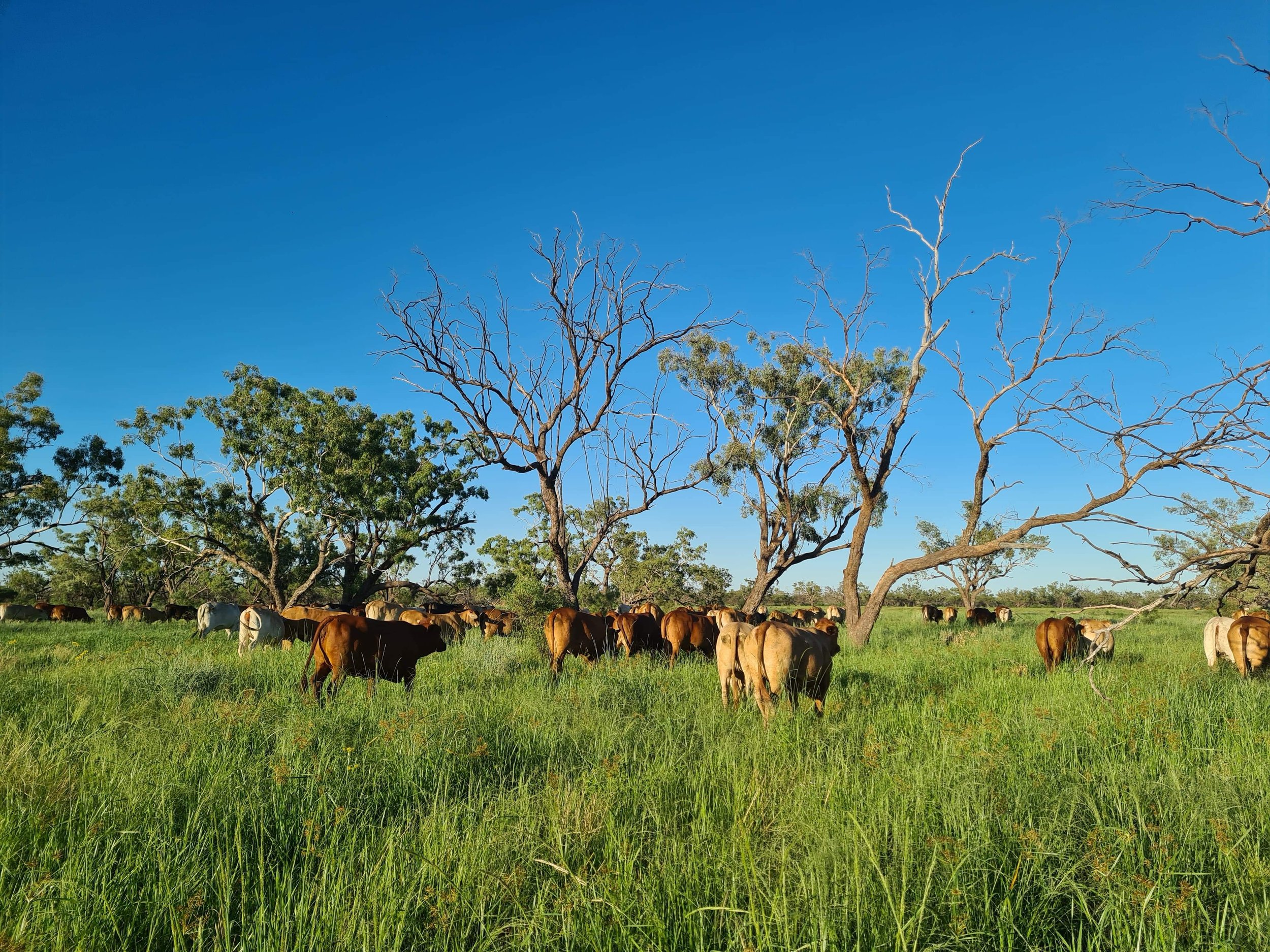
Australia
SLM Partners operates grazing land in Australia with a focus on grass-fed beef cattle production and carbon credits. We launched our first strategy in 2012 with AU$75 million. At its peak, we had over 450,000 hectares of land under management.
Our strategy is to implement a management process known as ‘holistic planned grazing’. This involves dividing land into smaller paddocks, putting cattle in large herds, and moving them frequently across the property, mimicking the behavior of large herds of herbivores in natural environments.
With the right management, raising cattle on native grasslands offers the lowest-cost method of beef production. These systems make the most of what nature provides for free – sunlight, rainfall, soils and the photosynthetic power of plants – rather than relying on external feed purchases such as grains and hay.
Australia has many advantages for low-cost, grass-fed beef production: disease-free herds, year-round grazing, reliable infrastructure, large properties, competitive land prices, and good access to markets. Australia also has a well developed and regulated market for carbon credits.

Farm Managers
Dylan Hay and Claire Struber
Ian Feather & Sandy Browne
Martha Lindstad and Robbie James
Blake Foster and Emma Lee
Mitch Rice and Cara Hay
Dustin & Christie Clinch
Our Impact
All our cattle are raised on native grasslands without supplementary feeding with grains. These are natural systems with high animal welfare. At the same time, the native grasslands managed by SLM are brittle environments. If poorly managed, they tend to degenerate, become hot spots for wildfires, and suffer from land erosion and loss of carbon.
The adoption of holistic planned grazing has the potential to regenerate the land by increasing vegetation cover, improving soil health, improving water cycles and enhancing biodiversity. Well-managed grasslands can store significant amounts of additional carbon, enough to offset most or all of the methane emissions associated with cattle.
In addition, under the Australian Carbon Farming Initiative, we have established carbon projects across more than half of our land focused on regeneration of native Mulga woodland and entered into contracts to supply carbon credits to the Australian Government’s Clean Energy Regulator. These projects are forecast to sequester more than 4.5 million tonnes of CO2 over 25 years, which is equivalent to over 10.4 million barrels of oil consumed.

Case Study: Padua
Padua was the first acquisition of the SLM Australia Livestock Fund. It is an aggregation of two properties that were purchased for approximately AU$10 million in 2012. Situated near Cunnamulla in south-central Queensland, it covers 43,000 hectares of native grassland and open woodland. Average rainfall is 380mm and it benefits from periodic flooding from the Warrego River.
The fund invested over AU$3 million into the development of infrastructure for holistic planned grazing across the property. Twenty-eight new water points were constructed, consisting of double tanks and troughs, supplied by 116km of newly laid water pipes. 788km of fencing was erected, mostly single-wire electric, creating 224 new paddocks. Each water point gave access to 8 paddocks around it. We also built 2 new cattle yards according to low stress stock handling principles, which allows animals to be moved and processed with less stress.
This development reduced the average size of paddocks to less than 200 hectares. It allowed us to introduce holistic planned grazing, using larger herds to have a positive impact on the land. During a long period of drought, our focus has been on conserving the condition of the land in order to build resilience and augment recovery rates. This approach has been validated as the property benefited from good rains in 2020 and is now showing abundant pasture growth.










